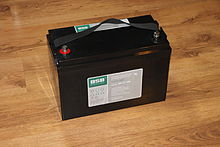7 Bits About Car-Battery Developments

The May 2015 Motorist from AAA contains an article on car batteries and the “electrifying developments” that are taking place in the automotive-battery industry. Here are seven bits of info about car batteries you might be interested in knowing.
- Lead-acid batteries are used in cars, even hybrids, rather than lithium-ion batteries found in consumer electronics.
- The lead-acid battery lifespan is six months to 48 months, but 70 percent fail within three years.
- The main causes of lead-acid battery demise are: temperature extremes, onboard electronics draining the battery, and poor maintenance (how to maintain your car battery).
- Cars don’t use lithium-ion batteries, because they don’t work well with temperature extremes, shocks and vibration, and automotive “start-stop” technologies.
- A new type of lead-acid battery, Absorbant Glass Mat (AGM), can support higher accessory loads.
- AGM batteries are used in more than 20-million vehicles world-wide.
- AGM batteries save approximately 381 million gallons of fuel annually.
There you have it. Seven bits of information about car batteries. If you’d like to know more about AGM batteries, Battery University has a Web page that lists their advantages and limitations. It doesn’t look like any U.S. automakers have gotten on board with AGM batteries yet, but you can purchase them as replacements.
Ann Silverthorn writes about a wide variety of topics in numerous genres. She’s currently working on a biography of William E. Dimorier (1871-1951), a nearly forgotten poet and educator, who dedicated his life to the betterment of young people.
Twitter: @annsilverthorn
Instagram: ann_silverthorn




Leave a Reply